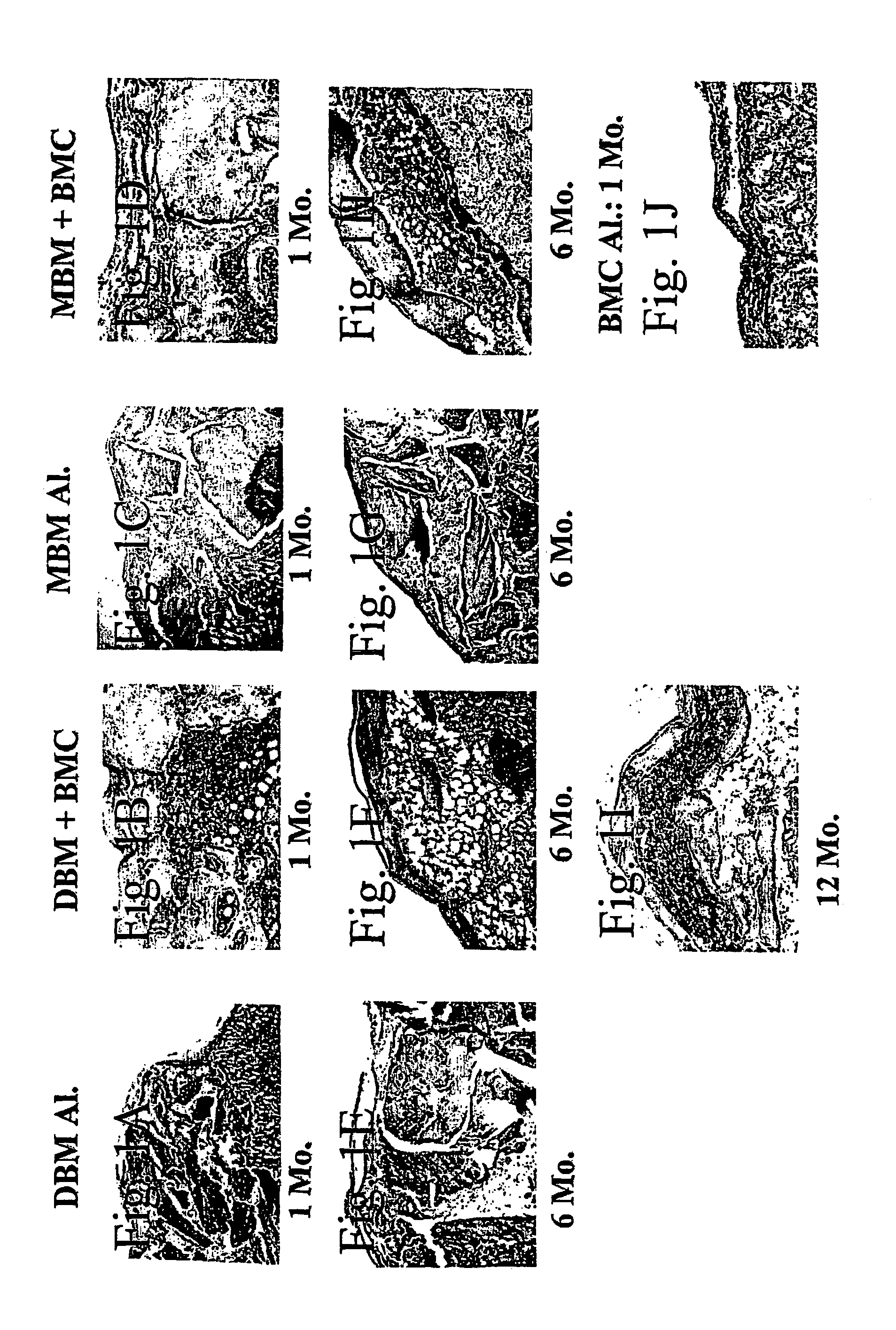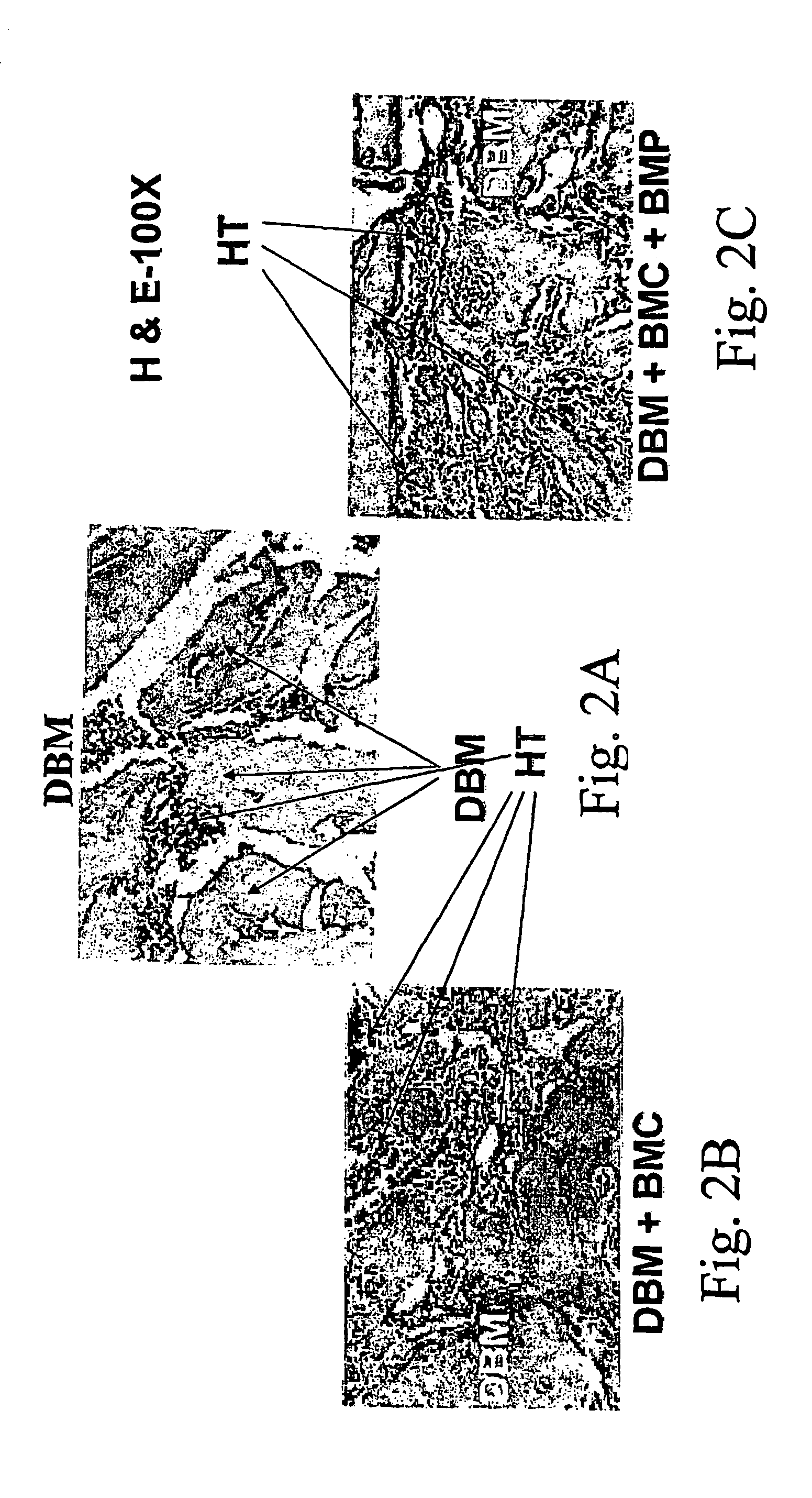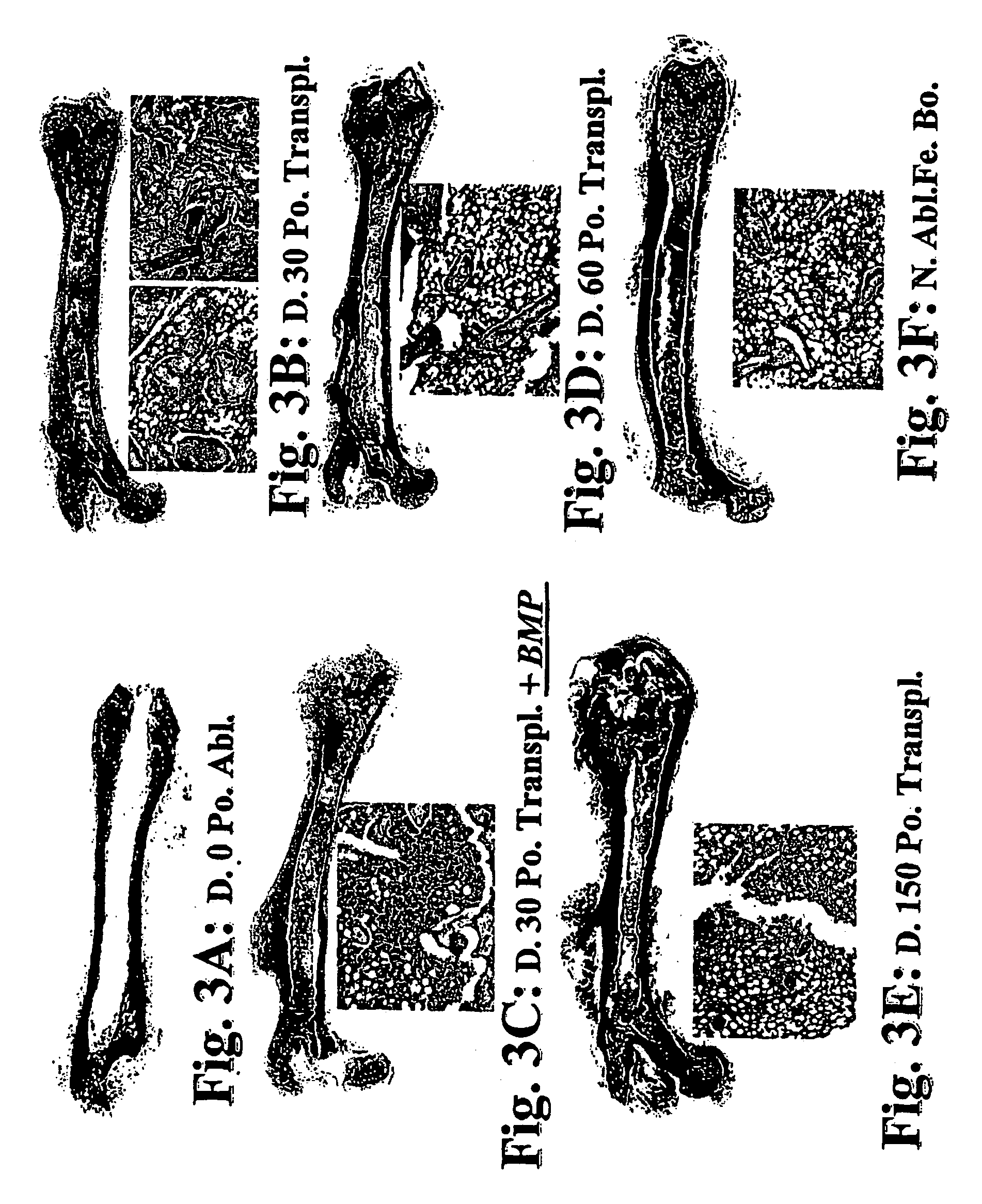Methods of treatment of hematopoietic disorders
a hematopoietic disorder and treatment method technology, applied in the field of hematopoietic disorders, can solve the problems of poor success rate, poor engraftment and disease-free survival of patients with mds, and achieve the effect of optimizing the facilitation of de novo hematopoietic reconstitution
- Summary
- Abstract
- Description
- Claims
- Application Information
AI Technical Summary
Benefits of technology
Problems solved by technology
Method used
Image
Examples
example 1
Transplantation of BMC Together with Demineralized (or Mineralized) Bone Matrix into the Bone Marrow Cavity or into the Sub-capsular Space of the Kidney in Rats
[0185]In the following examples, the experimentation involved in the development of the composition of the invention, it is shown that the mesenchymal stem cells persisting in the bone marrow BM) can be induced to form bone and supportive hematopoietic microenvironment when transplanted together with DBM into bone marrow cavity or extraskeletally, into the sub-capsular space of the kidney. In two sets of experiments, one carried out in rats and the other in rats and mice, DBM or MBM were implanted alone or together with BMC supplemented or not supplemented with additional bone morphogenetic protein-2 (BMP-2) (at least 12 transplants per group).
[0186]A one-step transplantation procedure was established in which a composition of BMC and demineralized (or mineralized) bone matrix powder (DBM or MBM) was inserted into the bone ma...
example 2
Treatment of Terminally Ill Patients
[0195]As seen in Example 1, under proper conditions, hematopoietic stem cells can create fully functional hematopoietic bone, but only if inoculated together with normal marrow stromal cells. Likewise, bone morphogenetic proteins (BMPs) can enhance bone marrow cellularity, stem cell engraftment and the efficacy of rescue of myeloablated recipients. Histologic examination of newly derived bones from mixtures of DBM and marrow stem cells under the kidney capsule featured fully functional hematopoietic bone generated within 2 to 4 weeks. The feasibility of induction of extra-medullary hematopoiesis suggested that the inventors' new method might be applicable for induction of microenvironment in situations where patient's own microenvironment is damaged or absent. Based on the above-mentioned observations, the inventors hypothesized that new bone formation with microenvironment and active hematopoiesis may be useful for patients with advanced stage MD...
case 1
[0197]Z. S., a 53 years old female patient was admitted in early September 2001 to the Department of Bone Marrow Transplantation of the Hadassah University Hospital (Jerusalem, Israel) for the treatment of MDS in transformation to leukemia. The patient presented cytogenetic abnormalities and myelofibrosis, that developed following polycythemia vera previously treated with phlebolomy, busulfan, hydroxyurea and interferon. Cytogenetic analysis revealed 46XX+1, der(1;7) (q10;p10) in 4 of 13 mitoses. Allogeneic BMT was the treatment of choice and a matched sibling was indeed located. Patient was conditioned with Fludarabine 30 mg / m2×6; Busulfan 4 mg / Kg×4 and Cyclosporine 3 mg / Kg starting 4 days previous to the transplant. This protocol resulted in prompt engraftment and rapid development of three-lineage hematopoiesis in all patients treated thus far. Unfortunately, although the patient received an adequate number of donor stem cells, 35.7×108 nucleated cells / Kg, no engraftment was obse...
PUM
| Property | Measurement | Unit |
|---|---|---|
| body weight | aaaaa | aaaaa |
| source-to-skin distance | aaaaa | aaaaa |
| volume/volume | aaaaa | aaaaa |
Abstract
Description
Claims
Application Information
 Login to View More
Login to View More - R&D
- Intellectual Property
- Life Sciences
- Materials
- Tech Scout
- Unparalleled Data Quality
- Higher Quality Content
- 60% Fewer Hallucinations
Browse by: Latest US Patents, China's latest patents, Technical Efficacy Thesaurus, Application Domain, Technology Topic, Popular Technical Reports.
© 2025 PatSnap. All rights reserved.Legal|Privacy policy|Modern Slavery Act Transparency Statement|Sitemap|About US| Contact US: help@patsnap.com



